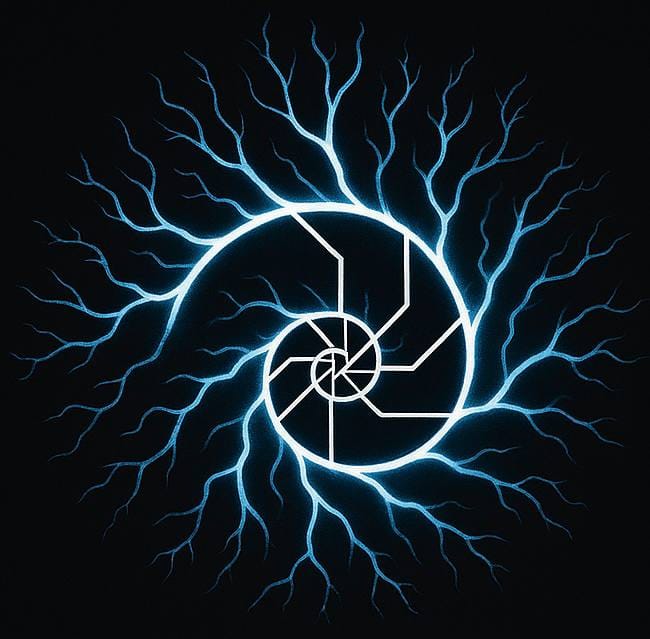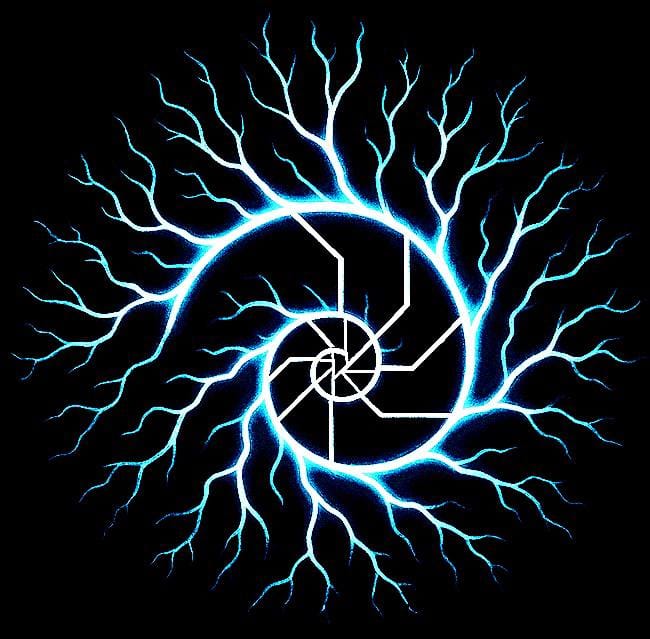Beyond the Machine: Toward a Fractal Understanding of the Human Body
The body is not a machine—it’s a self-regulating, fractal intelligence system constantly adapting, refining, and evolving. This article dismantles outdated mechanistic models and reveals how bioelectricity, perception, and consciousness drive healing, intelligence, and human potential.

Why Medicine Needs Both Precision and Pattern Recognition
For centuries, Western medicine has advanced on the foundation of a mechanistic view of the body: organs as parts, diseases as malfunctions, treatments as repairs. This model, rooted in Newtonian physics and Cartesian dualism, has achieved extraordinary progress in surgery, pharmacology, and diagnostics.
Yet, certain puzzles remain:
- Why does the placebo effect — expectation alone — measurably trigger healing responses?
- Why do emotions and social connection influence immune function?
- Why do some patients experience spontaneous remission from diseases deemed incurable?
These phenomena don’t invalidate the mechanistic model, but they expose its limits. To understand the body more fully, medicine must also consider the body as a complex, adaptive system — more like a living fractal than a machine.
The Mechanistic Model: Strengths and Limits
Strengths
- Precision: Treating the body as a machine has enabled targeted interventions — from stents to antibiotics.
- Predictability: Linear cause-effect models help isolate risk factors and design controlled trials.
- Specialization: Breaking down systems into organs has saved countless lives in acute care.
Limits
- Reductionism: Diseases rarely originate in a single organ; they emerge from network imbalances (e.g., cardiovascular disease reflects metabolism, stress, and environment, not just arteries).
- Mind-body gap: Psychological states and social factors demonstrably alter biology (psychoneuroimmunology, epigenetics), yet medicine still struggles to integrate them.
- Nonlinearity: Biological systems are not clockwork. Small changes (stress hormones, sleep loss) can cascade into large systemic effects.
The mechanistic model is not wrong — it is necessary but insufficient.
A Fractal / Systems Lens

Instead of discarding the machine metaphor, we expand it with systems biology, complexity science, and integrative health. Here’s what this “fractal” lens adds:
- Nested, Self-Similar Systems
- Biology is organized hierarchically: molecules → cells → tissues → organs → networks.
- Each level exhibits self-similar dynamics (feedback, repair, communication). This echoes fractals: repeating patterns at different scales.
- Scientific basis: Systems biology (Denis Noble, 2006) emphasizes emergent properties not predictable from parts alone.
- Self-Regulation and Coherence
- The body actively maintains homeostasis through feedback loops — heart rate variability, HPA axis regulation, immune balance.
- Health is less about “perfect stability” than about dynamic coherence: the ability to flex and recover.
- Scientific basis: Allostasis (McEwen, 1998); resilience research in physiology.
- Electrobiological Communication
- Cells don’t just talk chemically — bioelectric gradients guide development and healing.
- Scientific basis: Research by Michael Levin (bioelectric patterning in regeneration).
- Metaphorically, one could say the body is an “electrical symphony,” though mainstream science frames it as ionic signaling and membrane potentials.
- Psychology Shapes Biology
- Stress, belief, and perception alter immune responses and gene expression.
- Scientific basis: Epigenetics (e.g., maternal stress influences offspring methylation), placebo/nocebo studies, psychoneuroimmunology.
- Here, metaphors of “mind as conductor” are evocative but must be framed as influence, not total control.
From Parts to Patterns: How This Changes Medicine
- From Repair to Resilience: Medicine must shift from fixing breakdowns to supporting adaptive capacity — sleep, stress resilience, metabolic flexibility.
- From Symptoms to Networks: Disease arises from disturbed patterns (e.g., metabolic syndrome links obesity, insulin, inflammation, and mood).
- From External Fix to Internal Activation: Drugs and surgery remain vital, but lifestyle, environment, and perception shape outcomes at least as powerfully over the long term.
- From Linear to Nonlinear Thinking: Accept that healing is probabilistic, not guaranteed — interventions shift likelihoods, not destiny.
Implications for the Future
- Science: Systems biology, computational modeling, and network medicine are already reframing how we understand complex diseases like cancer, depression, and autoimmunity.
- Practice: Integrative and preventive medicine, emphasizing stress reduction, nutrition, and community, can extend longevity and resilience.
- Culture: Patients may come to see themselves less as “broken machines” and more as active participants in a dynamic ecology of health.
The mechanistic model gave us antibiotics, surgery, and vaccines. The fractal/systems model reminds us that the body is not just a machine but a living process, self-organizing and adaptive.
For medicine to evolve, it must hold both truths:
- Precision repair when parts break.
- Pattern recognition and resilience-building when systems falter.
This shift is not pseudoscience; it is already happening in fields like network physiology, bioelectric medicine, and psychoneuroimmunology. What is emerging is not mysticism but a richer science of the whole.
The question we now face is: How do we design a medical system that honors both the machine and the fractal — both the parts and the patterns — so that humans can thrive in a changing world?


Comments ()